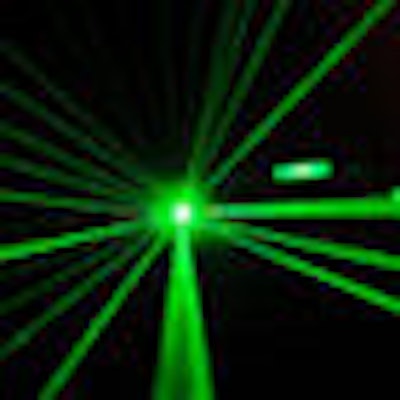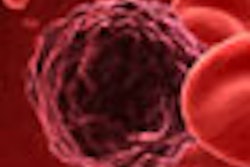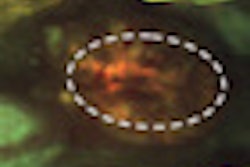
NEW YORK (Reuters Health) - A single session of photodynamic therapy using 5-aminolevulinic acid (5-ALA) and a pulsed dye laser shrank oral leukoplakia (OL) lesions in a substantial majority of patients in a small phase I/II study.
A major goal of the study -- to confirm the safety and tolerability of the approach -- was met, U.S. and German researchers reported this month in Archives of Otolaryngology-Head & Neck Surgery.
They treated 23 patients with at least one leukoplakia lesion at least 10 mm in diameter, with or without dysplasia.
Of the 17 patients treated with the maximum tolerated dose of pulsed dye laser exposure in the second phase of the study, seven (41%) had a significant response (more than 75% resolution of the lesion) at 90 days after treatment, nine (53%) responded partially, with a reduction of at least 25%, and one had a reduction of less than 25%, which was considered "no response."
The authors said no major adverse events occurred during the study.
Lead author Dr. Gal Shafirstein of the University of Arkansas for Medical Sciences in Little Rock told Reuters Health by email that this was the first clinical study to evaluate photodynamic treatment with high-power pulsed dye laser and 5-ALA against OL.
The major advantage, he said, is the short light exposure of 1.5 ms, versus 10-15 minutes' exposure to low-power laser light that was used in previous studies.
The prevalence of oral leukoplakia in the general population varies from 1% to 5%, Dr. Shafirstein said.
In many cases, he said, "the physician just observes the lesion and intervenes only if it becomes malignant."
At present, Dr. Shafirstein added, surgical resection is the standard curative therapy for OL. The aim of his research, he said, is to have photodynamic therapy replace surgery.
He said the research team was conservative in its evaluations: "We reported significant response, because we couldn't warrant complete disappearance" of the lesions.
Before the laser treatment, researchers initially applied a 20% solution of 5-ALA to the lesion via saturated gauze for 1.5 hours. In the last six patients, they directly injected an equivalent solution into the lesion, after coming up against problems with saliva dilution in some of the earlier cases.
A pulsed dye laser that emits light at a 585-nm wavelength in pulses of 1.5 msec was then used, delivering pulses at intervals of 1 to 3 seconds. The spot size was 7 mm, and the radiant exposure was 8 J/cm2. Patients received local anesthesia if needed.
Laser treatment was routinely completed "within minutes." Each patient received only one such treatment.
The authors note that applying 5-ALA to tissue leads to an accumulation of protoporphyrin IX in cells. Protoporphyrin IX has distinct absorption peaks in the visible-light spectrum, including one at 585 nm, the pulsed dye laser's wavelength.
When illuminated with high-energy light with a wavelength at one of the absorption peaks, protoporphyrin IX undergoes a chemical reaction that produces cytotoxic free radicals.
The report emphasized that further studies will be needed to fine-tune the treatment and maximize the likelihood of complete regression of OL lesions.
DUSA Pharmaceuticals Inc. in Valhalla, NY, provided the 5-ALA (Levulan Kerastick) at no cost, and Biocam GmBH in Regensburg, Germany, provided the fluorescence diagnosis imaging system at no cost.
By Scott Baltic
Source: https://bit.ly/tZfk7U
Arch Otolaryngol Head Neck Surg 2011;137:1117-1123.
Last Updated: 2011-12-07 13:48:15 -0400 (Reuters Health)
Copyright © 2011 Reuters Limited. All rights reserved. Republication or redistribution of Reuters content, including by framing or similar means, is expressly prohibited without the prior written consent of Reuters. Reuters shall not be liable for any errors or delays in the content, or for any actions taken in reliance thereon. Reuters and the Reuters sphere logo are registered trademarks and trademarks of the Reuters group of companies around the world.



















